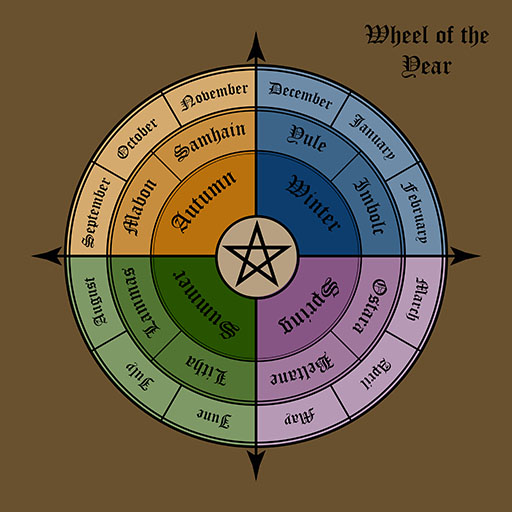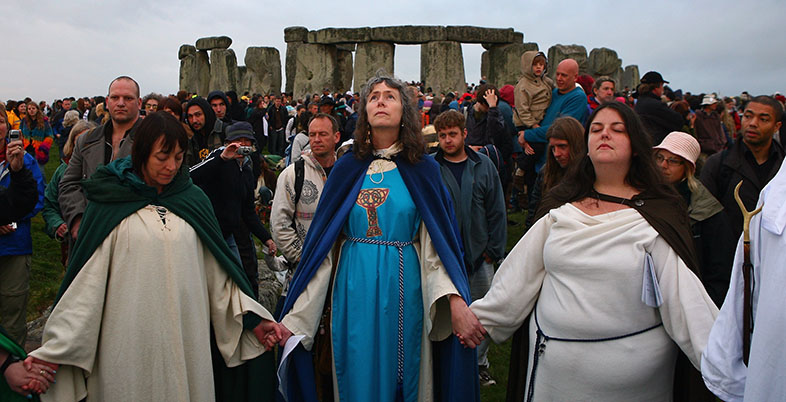3.2 Wiccan life
As suggested in The Charge of the Goddess, group practice was then a major part of Wiccan life, particularly the (lunar) monthly Sabbat which would be the regular gathering of the coven (and sometimes other covens). Less formal weekly meetings are called Esbats, and Wiccans also hold ceremonies to mark the eight holidays of the wheel of the year – the two equinoxes, in autumn (Lammas) and spring (Easter, or Ostara), the two solstices in summer (Litha, or Midsummer) and winter (Yule), and the four ‘quarter days’ (Imbolc, Beltane, Lugnasadh, and Samhain). There are several places where this matches up with the Christian calendar (at least as we know it today), and it is frequently claimed that this Pagan calendar was appropriated by Christianity. This is certainly true of some of these dates, with Candlemas being adopted from Imbolc, for example, but the situation is much more complicated than this in other cases. In fact, this Pagan calendar was only formalised in the nineteenth century.

